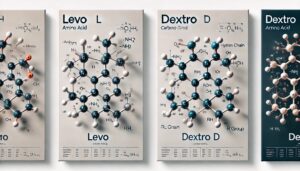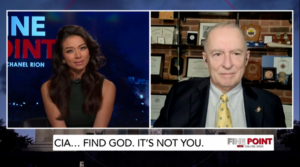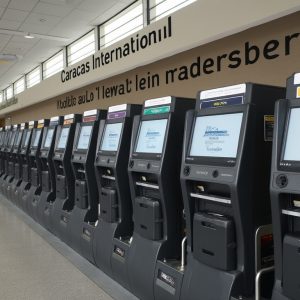A MIND-“NEOM”ING FUTURE VISION
“I want to be clear about this—Neom is a complex, bold, and highly ambitious undertaking and is most certainly not an easy one to deliver … But we are making strong progress, and it’s exciting to see the vision come to life.”
Antoni Vivas1
Our grand trek is just about over. Next week at this time, Ima and I will be checking in as “snowbirds” at an oceanfront resort in North Myrtle Beach, SC. As I write, we are staying at a lakeside hotel in Clarksville, VA (Ima and I have passed through here several times and always wanted to stay here).
Outside our window, the sun is setting, and the trees are all displaying their most vivid and glorious autumn colors: God’s wonderous palette of reds, yellows, golds, oranges and even a touch of purple.
I never get tired when nature shows off.
From the balcony I can see the lake, a handful of fishing boats and a fat, happy groundhog sunning himself.
None of this—other than putting me in a good state of mind—has anything to do, of course, with this missive.
Before we left Bethany’s house (my youngest daughter), I noticed an article on the futuristic Saudi city of Neom.2
What is Neom you may ask?
The word Neom itself stems from the Ancient Greek prefix Neo (meaning “new”) and the “M” is an abbreviation of the Arabic word Mustaqbal (meaning “future”).
The coined word has been adopted for a totally new concept in urban planning. Neom’s origins trace back to an announcement at a future investment conference in Riyadh by Saudi Crown Prince Mohammed bin Salman (MBS) five years ago, (late-October 2017). At that time, MBS outlined an urban area—10,200 square miles—to be built in northwestern Saudi Arabia (Tabuk Province) that would incorporate smart city technologies and become one of the world’s leading tourist destinations. Since everything had to be built from scratch, the megaproject’s initial planning and construction costs—estimated to be USD500 billion—came from the Public Investment Fund (the Saudi sovereign wealth fund) and other international investors. The Neom initiative was the cornerstone of MBS’s Saudi Vision 2030, an ambitious plan to reduce the country’s dependence on oil, diversify its economy, and develop public service sectors.3
The Crown Prince envisioned a city powered solely by wind and solar power, flying cars, robots capable of performing a broad range of functions, dinosaur robots, high-speed rail, robotic avatars, holograms, and even an artificial moon.4 It bothered him little that none of these technologies were then—or now—mature enough for such large-scale usage.
Neom, as originally envisioned, will consist of three parts: the Line (more below), Oxagon (a large floating industrial complex), and Trojena (a futuristic skiing and entertainment area).
Most interesting to me is a proposed section of the city called “the Line”—a 110-mile “smart” linear-skyscraper city that will have no cars, streets, or carbon emissions.5 The Line is envisioned to be the first part of the city’s development and, if all goes well, will extend from the Red Sea to the city of Tabuk. The original plan consisted of two mirrored long buildings (with an outdoor space in between), 660 feet wide and 1,600 feet high (making it the 12th tallest building in the world). Moreover, as envisioned by MBS, the Line will consist of three layers: the surface layer for pedestrians, one underground level for infrastructure and another underground level for transportation, mainly a high-speed rail that will whisk passengers from one end of the Line to the other in twenty minutes. Eventually the Line will have 9 million citizens. In July 2022, modifications were made to the original plan for the Line: instead of multiple buildings on a linear grid, it will now consist of one long building.
Artificial intelligence will constantly monitor the Line (and, presumably, its inhabitants) using predictive data models to improve the daily life of the citizens.
Right! If you believe that then I have a part of the Brooklyn Bridge available to buy; especially considering Saudi Arabia’s abysmal human rights record, mistreatment of women, and long track record of spying and monitoring its citizens. As a result, critics are skeptical that Saudi citizens will benefit from Neom’s status as a surveillance city.
So, what could go wrong with creating Oz out of an endless sand, kitty-litter box? After all, they did it in Vegas right?
First, less than a year after Neom was announced with great public fanfare, MSB—de facto ruler of Saudi Arabia, seventh son of King Salman, and recently named Prime Minister—became a lightning rod of international condemnation due to his alleged role in the early October 2018 assassination of Jamal Khashoggi. Khashoggi, a Saudi Arabian commentator and journalist for the Washington Post, had been highly critical of the Saudi regime before he was ambushed, strangled, and dismembered in the Saudi embassy in Turkey by a squad of Saudi assassins. The story, replete with foot-dragging by Saudi officials, worldwide press attention, a body double, international tension and intrigue, a CIA Director’s plane flight and investigation, parts of a body stuffed in a well, reads like a John le Carre novel.6 Most believed MBS’s fingerprints were all over the murder; he acknowledged it happened on his watch but denied he gave the final order for the extrajudicial killing.
To say the affair had a chilling effect on U.S.-Saudi relations would be a gross understatement. In the U.S., then-President Donald Trump (eager to preserve the U.S.-Saudi relationship) blamed rogue actors rather than MBS (despite reports to the contrary from his intelligence services). When Joe Biden was elected, he publicly belittled MBS (threatening to treat him as a “pariah,”7 presumably to appease the far-left wing of his own party) and allowed close relations to lapse (by July 2022, with rising oil prices causing political problems, Biden was forced to “eat crow” with a visit to Saudi Arabia). In recent days, a public spat has surfaced following Saudi Arabia’s decision to follow OPEC+ countries in cutting oil supply—prompting Biden threats, Saudi claims that Biden was manipulating oil prices for political purposes, and Saudi officials forced to publicly deny reports of private MBS remarks about Biden’s diminishing mental capacity.8
Stay tuned.
In addition to poisoning relations with the U.S. and Turkey, the Khashoggi affair tainted MBS’s Neom plans. Futurist advisers including Daniel Doctoroff and architect Norman Foster dropped Neom and its “toxic” mentor like a hot potato. They were not alone. By mid-2022, according to The Economist, only two buildings had been constructed and most the area remained bare desert;9 more recently, excavation on the Line only began in October 2022.10
The second obstacle for Neom’s construction stemmed from legal and public relations issues surrounding native Howeitat tribal claims. One tribal human rights activist, after posting several videos showing the violent methods used by Saudi law enforcement to oust locals from their land, was killed by Saudi security forces. To put a band-aid on the controversy, MBS hired a U.S. public relations and lobbying firm, but legal claims continue at various domestic and international levels.
Thirdly, claims by former employees directed against the former CEO of the Neom project assert an abusive work culture and a corrosive management style. Several executives have quit the project, despite Saudi offers of exorbitant salaries to attract technologists.
Another reason I am interested in Neom is because the city—especially the Line—features prominently in an important scene in my next futuristic novel. Let me set the stage for you. Between 15-20 years in the future there is a major global war that wipes out a significant portion of the world’s population. There had been a warning that it was coming, especially a prophecy uttered by a previously unknown person at a major church conference in Asia. The prophecy not only foretold the disastrous worldwide war to come—subsequently called “The Great Conflict” by those lucky enough to survive it—but also the collapse of international institutions and Western nation-state structures. Moreover, according to the prophecy, the Great Conflict itself preceded end-of-time harbingers such as strange signals from beyond.
Out of the war’s ruble emerged a seven-person Commission possessing broad-ranging executive and judicial powers over global affairs. This body attempted to set the postwar world right and study the root causes for the conflagration. The most powerful of the Commissioners, and the most recognizable face in the world, is High Commissioner Abdullah, a Sunni imam from Turkey and highly decorated participant in the Great Conflict. His loyal right-hand man, wartime comrade, confidante, and trusted covert operator was Sheik Kabbani. Both Abdullah and Kabbani suspect the activities of another Commissioner, Ch’en, a Sino-Singaporean business magnate with extensive global and lunar commercial interests.
Thus, the novel rotates on three tensions: the looming end of time, the challenges faced by future Christians. and growing friction within the Commission itself.
So, here goes …
CHAPTER TWENTY-SEVEN
Abdullah’s Assignment
A TROUBLED SHEIK KABBANI took a seat at High Commissioner Abdullah’s huge mahogany desk. The wall behind Abdullah’s desk was dominated by a huge gold-framed photograph—alternating in various virtual reality nighttime sequences—of the futuristic city called “The Line,” a sideways skyscraper stretching over 100 miles across the Saudi desert. The final stages of the architectural masterpiece, originally the cornerstone of Saudi Crown Prince Mohammed bin Salman’s grandiose Neom Project, stood unfinished. Construction was interrupted by the Great Conflict.
Instead of the nine million inhabitants originally projected to occupy the futuristic city, less than 35,000 people—a ragtag collection of desert nomads and other lucky survivors of the opening nuclear exchanges that ravaged the Middle East—lived threadbare existences in mostly abandoned corridors and waterless fountains.
They struggled to keep the dream alive.
So did Abdullah.
He was working on no less than three projects to attract workers, technocrats and the Sunni faithful to Neom.
Indeed, the Neom Project was part of Abdullah’s grand vision to reestablish a new Muslim spiritual and commercial caliphate. As a first step, he propped up the old Saudi royal family in Riyad and put them in charge, again, of the two holiest Muslim sites: the Grand Mosque in Mecca and its revered Black Kaaba—the continued favorite postwar destination for pilgrimages by the faithful—and nearby Medina.
But the real gemstone of his aspirations was a revived and powerful Neom. Before the war, he had been a major investor in the project. Afterward, he played a major role in having the Commission declare the development an international city. He funneled much of the Commission’s commercial activities in the region through businessmen and bankers personally affiliated with him. As a result, Neom became the focal point for efforts to rebuild the shattered global economy and a center for the new global currency.
All the world’s techno-titans and new elites that rose from the ashes of the old order—from Shenzhen and Shanghai to Nairobi and Brazilia, to Jerusalem and Moscow—paid homage to Abdullah and his minions at Neom.
On one occasion Abdullah, in a euphoric moment, described to Sheik Kabbani his various commercial ventures and the new city he envisioned, as the “New Babylon.”
But that morning, Neom—and Abdullah’s dream for a sprawling postwar empire—was far removed from Jerusalem, his office at Commission headquarters, and Kabbani’s long list of problems.
“You seem troubled my friend,” Abdullah began, his voice nonplussed as ever.
“Yes, High Commissioner,” Kabbani replied with a sigh, “it is time I told you about several nettlesome developments—”
“How nettlesome?”
“For starters, your ally on the Commission—Ch’en—has been acting strangely of late.”
Abdullah leaned back in his chair. He carefully studied Kabbani, his longtime loyal friend and wartime confidante. He knew he was not one prone to exaggerate things. “How strange?”
“He’s not here at headquarters. He took a commercial jet back to Singapore, without clearing it through Commission channels.”
“Perhaps he had urgent business to tend to at home—”
“Perhaps,” Kabbani replied, “but almost immediately after arriving he met with his personal assistant—”
“Kwa?”
“Yes, High Commissioner.”
“None of his family?”
“No, instead the two of them accompanied a special guest to Bintan—”
“Bintan?”
Kabbani nodded.
“How do we know all this?”
“We have eyes on the ground in the city-state Your Excellency—”
“So, you’ve been monitoring the activities of a fellow Commissioner—”
“Yes, Your Excellency, on my authority.”
Abdullah leaned forward, his eyes narrowing. “On your authority—”
Kabbani swallowed heavily and pushed a piece of paper across the desk.
Abdullah picked it up to examine the note. “What is this?”
“A report from our agent in Singapore—”
“And this one?”
“A report from the Commission’s INTERPOL office there.”
Abdullah, his curiosity nerve now in full tingle mode, scanned the two readouts.
Kabbani also showed Abdullah an intercept from a member of Ch’en personal security entourage and played a short sequence of overhead drone footage.
“I recognize Ch’en’s son and Kwa. Who is the old guy with them?”
“They call him the Prophet?”
“Prophet?”
“Why do they call him the Prophet and what are Ch’en’s ties to him?”
“Exactly, Your Excellency. That’s what I want to find out—”
“Where is Commissioner Ch’en now?”
“We don’t know. All cyber and other monitoring channels have gone dead. He has vanished into thin air—”
“I’m assuming you are taking all necessary steps—on your own authority—to pick up his trail?”
Kabbani nodded.
“Sheik Kabbani, do you have something else?”
Kabbani showed the video from the Special Tribunal and Judge Stammen to the High Commissioner. Abdullah replayed the Prophet’s final words.
“That partially explains who the Prophet is. How did Ch’en keep him out of our sight? And why?”
Kabbani spread his arms in frustration. “I wish I knew Your Excellency. You know I never trusted Ch’en from the start—”
“It looks like our friend has his own agenda.”
“Find out what it is, Sheik Kabbani. No excuses. I don’t want any more surprises.”
Kabbani debated on whether he should share the Tehran information.
“Is there something else?”
“Sorry, Your Excellency.” Kabbani shared the video from his contact in Tehran showing the writing in the cave.
“Our friend’s deceit, a so-called Prophet predicting a future message from the stars and strange cave writings about the end times. You have been busy my friend—”
“What do we do next Your Excellency?”
“How long has it been since you’ve been to Bangkok?”
“I’ve never been there—”
“I want you to speak to the lawyer and Susan Chu. I’m troubled about this one they call the Prophet.”
“What about that ratface Ch’en?”
“I’ll deal with him through other channels. But just in case, perhaps you should contact our old friend Abu, in case his special services are needed—”
“His services are costly Your Excellency.”
“Take whatever costs are involved out of my Special Fund. And make sure no one else knows.”
“Yes, Your Excellency.”
“And Sheik Kabbani—”
“Yes—”
“I want to be informed about every step from here on out. Do I make myself clear?”
“Yes, Your Excellency.”




